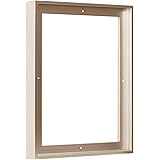Mastering Kitchen Lighting Design: A Comprehensive Guide to Illuminating Your Space
Transforming a kitchen goes beyond selecting cabinetry and countertops; its true potential is unlocked through thoughtful illumination. As highlighted in the video above by Michael from Kitchensider, effective kitchen lighting is not merely about brightness, but about creating layers that cater to diverse needs and moods. Many homeowners face the challenge of designing a space that is both functional for meal prep and inviting for entertaining. The solution lies in a strategic, multi-faceted approach to your kitchen lighting design, ensuring every corner of your culinary hub shines optimally.
A well-lit kitchen enhances usability, safety, and aesthetic appeal. It transforms a utilitarian space into a dynamic environment that adapts to your daily life. We advocate for a three-tiered lighting strategy: ambient, task, and decorative. Each layer serves a distinct purpose, and when harmonized, they create a versatile and visually stunning kitchen.
The Foundation: Ambient Kitchen Lighting Strategies
Ambient lighting forms the fundamental layer, providing general illumination to the entire room. Typically, this comes from LED recessed lights, often referred to as pot lights or downlights, installed in the ceiling. The primary objective is to flood the kitchen evenly with light, ensuring no dark spots yet avoiding excessive brightness that feels like “standing on the surface of the sun.”
Crucially, the effectiveness of your ambient lighting hinges on careful planning of quantity and placement. Factors such as room size, ceiling height, and kitchen layout all dictate the optimal number and positioning of fixtures. Larger diameter downlights offer greater coverage, potentially reducing the total count needed. Furthermore, structural elements like ceiling joists, beams, or skylights can impose physical constraints, influencing where these lights can be installed.
Optimal Placement and Spacing for Recessed Lights
When positioning your recessed lighting, start by establishing the first row a strategic distance from the wall. A good general guideline is to align these lights with the edge of your countertop, typically around 60 centimeters (or 24 inches) off the wall. This precise placement serves two critical functions:
- It ensures sufficient light reaches the entirety of wall cabinets, preventing light cutoff if positioned too close.
- It prevents shadows from being cast by your own body as you work at the countertop, which can happen if the light source is directly behind you.
From this foundational row, extend your lighting along the kitchen run, spacing lights anywhere from 90 centimeters to 1.5 meters (approximately 3 to 5 feet) apart. Maintain the minimum 60-centimeter (24-inch) distance from any wall. While a loose rule suggests spacing lights at half your ceiling height (e.g., an 8-foot ceiling means 4-foot spacing), this should be treated as a starting point. The size of your chosen lights, the unique shape of your room, and your specific kitchen layout often dictate a more tailored approach to achieve uniform coverage.
In kitchens featuring islands or peninsulas, it’s often advisable to reserve these areas for more specific task or decorative lighting, like pendants, rather than using standard recessed lights. Should a downlight’s typical position interfere with full-height cabinets, adjust its placement. Bringing it out approximately 15-30 centimeters (6 to 12 inches) from the cabinet allows the light to properly cascade into the room, especially vital when cabinet doors are open.
Beyond basic placement, consider the beam angle of your recessed lights. A wider beam (e.g., 60 degrees) is excellent for general ambient wash, while a narrower beam (e.g., 20-30 degrees) can highlight specific features. Modern recessed fixtures also come with various trims, such as baffle trims to minimize glare or reflector trims to maximize light output, each contributing subtly to the overall aesthetic and functional outcome of your kitchen lighting design.
Illuminating Your Workflow: Dedicated Task Lighting
Task lighting is indispensable for any functional kitchen, providing concentrated illumination precisely where daily activities occur. While ambient lighting offers general brightness, task lighting ensures that critical zones like countertops, sinks, and cooking surfaces receive intense, direct light, crucial for safety and efficiency. This layer typically encompasses under cabinet lighting and pendant lights, each serving a vital role in enhancing your kitchen’s utility.
Under Cabinet Lighting: Brightening Your Workspaces
Under cabinet lighting stands as a cornerstone of practical kitchen design. It provides a direct and intentional light source that is significantly more focused than ambient ceiling lights, which diffuse by the time they reach your countertops. This direct illumination is invaluable for food preparation, cooking, and various kitchen tasks, minimizing shadows and eye strain.
The market offers a diverse range of under cabinet lighting options, from versatile LED strip lighting to individual puck lights. While personal preference plays a role, LED strip lighting is often preferred for its ability to deliver a more even and continuous wash of light across the entire countertop. Placing these strips towards the front edge of the wall cabinet maximizes coverage over the working area, rather than simply illuminating the splashback. For new kitchen designs, integrate under cabinet lighting planning early to facilitate proper wiring. Retrofitting options include battery-operated, remote-controlled lights, or those designed for surface mounting with discreet wiring solutions.
When selecting LED strip lighting, consider the lumens per foot for brightness and the LED chip density for a seamless light line without visible dots. Utilizing diffuser channels for LED strips can further enhance the evenness of light distribution, creating a sleek, professional finish. Opt for options with a high Color Rendering Index (CRI) – ideally 90+ – to ensure that food colors appear natural and vibrant, a crucial detail for any culinary enthusiast.
Pendant Lighting: Functional Features Over Islands and Peninsulas
Pendant lights serve a dual purpose, acting as both a powerful task lighting source and a striking decorative element above kitchen islands or peninsulas. By bringing intense light closer to the countertop, they provide focused illumination essential for prep work, casual dining, or socializing. The ideal hanging height is critical, balancing practical lighting with unobstructed sightlines.
A widely accepted guideline suggests positioning the bottom of the pendant fixture between 75 to 90 centimeters (30 to 36 inches) above the countertop. However, this height should be adjusted based on the height of household members to prevent visual obstruction. From an aesthetic perspective, the number of pendants is key. For individual pendants, two or three fixtures generally create the most balanced and visually appealing arrangement. The size of your island or peninsula, along with the scale of the pendants themselves, will determine the optimal quantity.
For perfect symmetry with two pendants, divide the island’s length into thirds and place the lights at these points. With three pendants, center the first light and then space the remaining two evenly outwards. Beyond symmetry, pendant lights offer an incredible opportunity for personal expression. Whether you choose a single dramatic LED strip, a cluster of eclectic lights, or classic individual fixtures, they contribute significantly to your kitchen’s overall style, defining a focal point and adding architectural interest.
The Finishing Touch: Elevating Aesthetics with Decorative Lighting
Decorative lighting is the “cherry on top” of your kitchen design, transforming a functional space into an environment with personality and flair. These lights are not primarily for tasks but are integral to creating ambiance, highlighting architectural features, and enhancing the overall visual appeal. While often considered non-essential, these details can significantly elevate your kitchen’s aesthetic, creating a ‘wow factor’ and a more enjoyable user experience.
Examples of decorative lighting include in-cabinet lights for glass-fronted wall cabinets, showcasing treasured dishware or glassware. Internal drawer lighting, activated upon opening, adds a touch of luxury and practicality. Larder cupboard lighting illuminates deeper storage areas. Furthermore, strip lighting beneath the countertop’s front edge, or plinth lighting—either as continuous strips under base cabinets or individual lights cut into the plinth itself—creates a captivating floating effect, especially in contemporary designs.
These subtle yet powerful additions contribute to the kitchen’s layered complexity, inviting visual exploration and transforming the room after dark. They can accent textures, materials, and colors, turning simple elements into focal points. The strategic use of decorative kitchen lighting allows you to craft specific moods, transitioning your kitchen seamlessly from a brightly lit workspace to a softly illuminated social hub.
Bright Ideas: Essential Tips for Superior Kitchen Lighting
Beyond the three fundamental layers, several critical considerations can refine your kitchen lighting design, offering ultimate control and aesthetic harmony.
Individual Controls for Layered Lighting
Perhaps the most vital tip is to implement individual controls or switches for each distinct layer of lighting. Imagine a single switch that turns on every light in your kitchen – convenient, perhaps, but entirely lacking in versatility. Separating controls for ambient ceiling lights (possibly even splitting them into zones for larger rooms), pendant lights, under cabinet lights, and all decorative lights empowers you to create diverse lighting environments. This flexibility allows you to adjust the mood and functionality of your kitchen instantly, whether you’re performing intricate tasks, enjoying a quiet meal, or entertaining guests.
Integrating these controls with smart home systems can further enhance functionality, enabling scheduling, remote access, and voice control. Consider multi-gang switches, dimmers, or even touch-panel interfaces for a sophisticated, streamlined control system that complements your modern kitchen.
Embrace Dimmable Lighting
Dimmable lighting offers another layer of environmental control, allowing you to fine-tune brightness levels to suit any activity or time of day. While you might opt for universal dimming, integrating dimmers primarily on pendant lights or ambient circuits can provide substantial benefits. This feature is particularly valuable for transitioning your kitchen from a bright workspace to a softer, more intimate setting for dining or evening relaxation. Always ensure that all lamps, especially LEDs, and the accompanying switches are compatible with dimming technology to prevent flickering or damage.
The Aesthetic of White Recessed Fixtures
While recessed ceiling lights come in various finishes like stainless steel, brass, or black, a plain white finish often proves to be the most advantageous choice. In ceilings typically painted white, white-finished fixtures blend seamlessly, appearing almost invisible. This minimizes visual clutter and prevents the eye from being drawn upwards, which can make a room feel busier or even lower the perceived ceiling height. This subtle design choice allows the light itself to be the focus, rather than the fixture, contributing to a clean and sophisticated aesthetic.
Understanding Color Temperature (Kelvins) for Ambiance
The color temperature of your lights, measured in Kelvins (K), profoundly impacts the atmosphere of your kitchen. A lower Kelvin number, such as 2,000K, emits a warm, orangey-red light reminiscent of candlelight, creating a cozy and calming ambiance. As the Kelvin value increases towards 4,000K, the light becomes more neutral, resembling natural daylight. Moving higher, to 5,000K or 7,000K, results in a cooler, bluer-white light, often referred to as daylight, which enhances alertness and focus.
For main ambient and task lighting, a natural to daylight color temperature (around 4,000K to 5,000K) is typically recommended. This provides clear, crisp illumination ideal for detailed tasks and general visibility. Conversely, warmer temperatures can be reserved for decorative lighting to introduce soothing accents or create a relaxed mood. The ultimate flexibility comes with smart lights or bulbs that allow you to dynamically change color temperature, offering unparalleled customization to match any activity or desired atmosphere within your dynamic kitchen space.
Remember that the Color Rendering Index (CRI) is also crucial, especially in kitchen environments. A high CRI (90+) ensures that colors, particularly those of food, are rendered accurately and vibrantly under artificial light, enhancing the visual appeal of your culinary creations and the overall aesthetic of your space. Combining thoughtful Kelvin selection with high CRI ratings is key to truly exceptional kitchen lighting.











